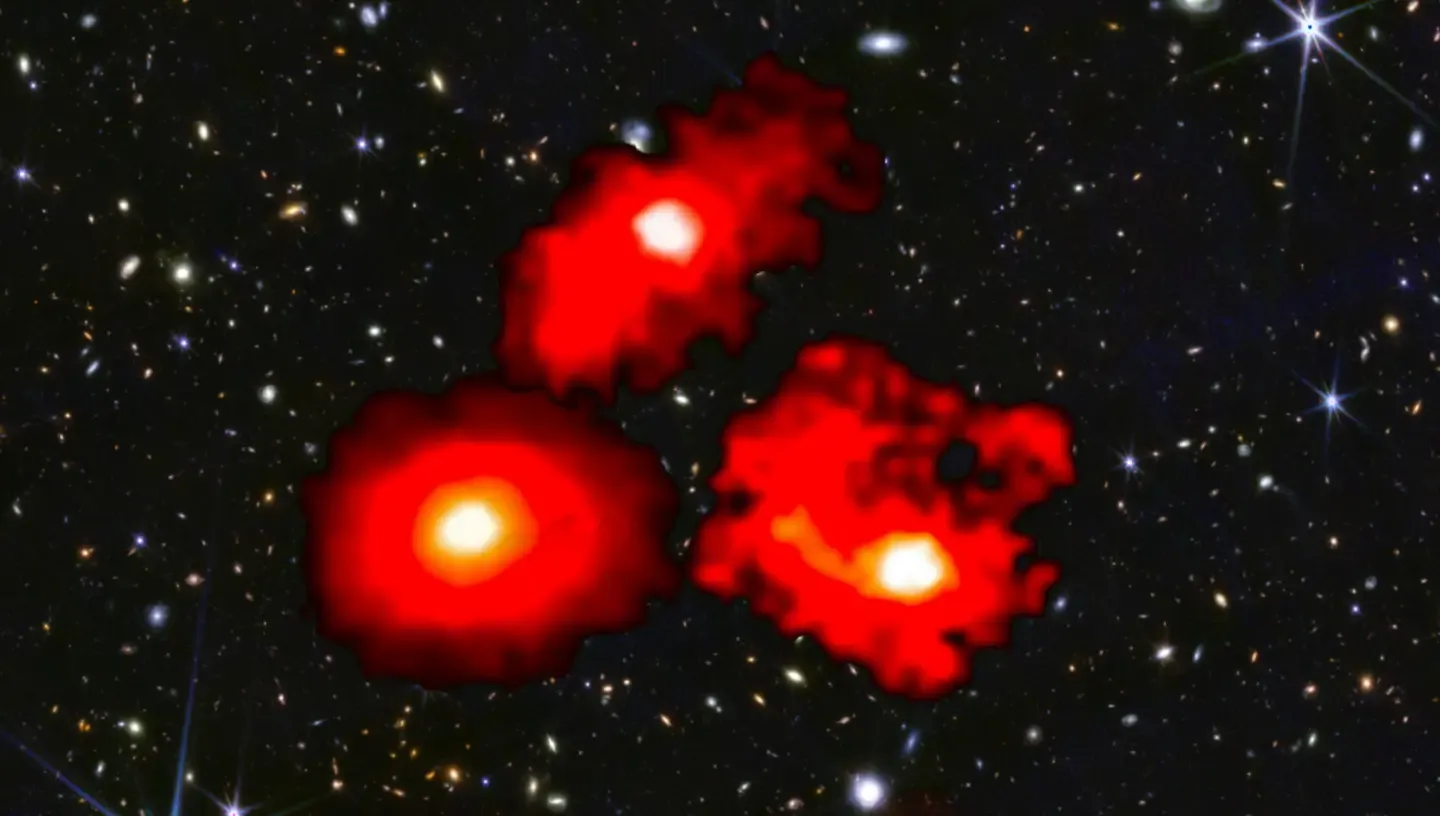Unveiling the Giants of the Cosmic Dawn
In the vast expanse of the cosmos, astronomers have stumbled upon a startling discovery that challenges our understanding of the early universe. Peering back billions of years, they have identified three colossal galaxies, dubbed “red monsters,” that formed astonishingly early in cosmic history. These galaxies, each nearly as massive as our own Milky Way, existed when the universe was a mere fraction of its current age.
The James Webb Space Telescope: A New Era of Discovery
The revelation of these red monsters is a testament to the power of the James Webb Space Telescope (JWST), a marvel of engineering that has revolutionized our view of the cosmos. Launched in 2021, JWST’s unprecedented sensitivity and infrared vision allow it to peer through cosmic dust and gas, revealing distant galaxies that were previously hidden from view.
A Cosmic Puzzle
The discovery of these early, massive galaxies poses a significant challenge to our current models of galaxy formation. According to these models, galaxies grow gradually over billions of years, fueled by the accretion of gas and the formation of stars. However, the red monsters seem to have formed and grown at an astonishingly rapid pace, defying conventional wisdom.
The Redshift Enigma
One of the key characteristics of these galaxies is their high redshift, a measure of how much the light from these objects has been stretched by the expansion of the universe. A higher redshift corresponds to a greater distance and a more ancient epoch. The red monsters exhibit remarkably high redshifts, indicating that they formed when the universe was only a few hundred million years old.
The Role of Dust
The distinctive red hue of these galaxies is attributed to the presence of dust, which absorbs blue light and re-emits it as red light. This dust, composed of heavy elements forged in the hearts of stars, suggests that these galaxies have undergone significant star formation activity. The rapid formation of stars, in turn, implies a rapid influx of gas, further fueling the growth of these cosmic behemoths.
Implications for Galaxy Evolution
The discovery of the red monsters has profound implications for our understanding of galaxy evolution. It suggests that galaxies may have formed and grown much more rapidly in the early universe than previously thought. This rapid growth could be attributed to a variety of factors, including efficient star formation, mergers with other galaxies, and the presence of large amounts of dark matter.
Future Research
To unravel the mysteries of the red monsters, astronomers will need to conduct further observations with JWST and other telescopes. By studying the properties of these galaxies in greater detail, scientists hope to shed light on the processes that led to their rapid formation and growth.
A New Frontier in Cosmology
The discovery of the red monsters marks a new frontier in cosmology. It challenges our fundamental understanding of galaxy formation and opens up exciting new avenues of research. As we delve deeper into the cosmic dawn, we may uncover even more surprises about the universe’s early history.
Conclusion
The red monsters are a testament to the power of human ingenuity and the relentless pursuit of knowledge. By pushing the boundaries of technology and scientific inquiry, we are unlocking the secrets of the universe, one discovery at a time. As we continue to explore the cosmos, we may find that the universe is even more wondrous and mysterious than we ever imagined.

